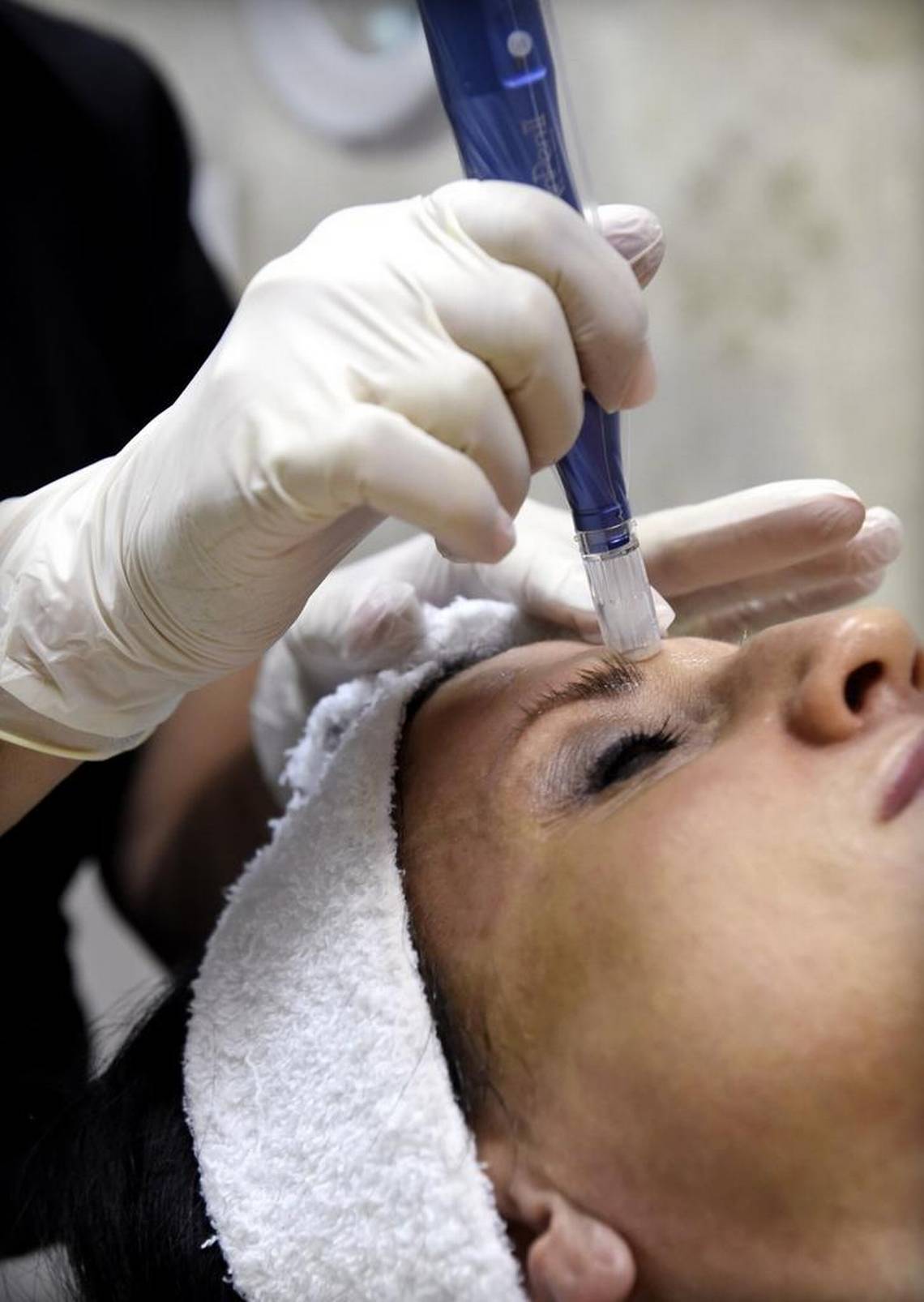Microneedling has quickly become one of the most popular skin rejuvenation treatments. If you’re considering trying it, here is what you need to know.
Microneedling, also called collagen-induction therapy, uses small needles that pierce the outermost layer of skin to create tiny microchannels. These microchannels help stimulate the production of collagen and elastin within the skin. They also promote new capillaries.
This can lead to an improved skin texture, reduction of acne or other scarring and help with discoloration, such as brown spots caused by sun damage. Microneedling may be combined with platelet-rich plasma, stem cells, or pure hyaluronic acid to enhance results further.
Microneedling can also be used on the scalp to help stimulate hair rejuvenation.
Prior to your first microneedling session, you will be asked to avoid sun exposure for at least 24 hours. Some doctors will tell you to avoid blood-thinning medications and herbal supplements like aspirin, ibuprofen and St. John’s wort to reduce bruising.
Each microneedling session takes about 20 to 30 minutes. First, your face will be cleansed and a numbing cream will be applied. Multiple treatment sessions, spaced a few weeks apart, are recommended. Most doctors recommend three to six treatments but many will notice an improvement in the tone and texture of their skin after just one treatment.
Immediately after your microneedling session, you will likely notice some redness that can last for several days. In my practice, we recommend that patients do not touch their face for at least four hours after treatment and do not apply anything to the face for 24 hours. It is crucial to avoid sun exposure for three days after the procedure.
You should avoid strenuous activity and exercise for the first 12 hours after treatment to prevent redness and bruising. For the first three days after treatment, you should use a gentle non-foaming cleanser, a barrier repair moisturizer, and a physical SPF. If swelling or bruising are a concern, you can take arnica supplements both before and after treatment to help minimize these side effects.
Once any redness or swelling diminishes, you should notice an immediate improvement in the way your skin looks and feels. Over the next several weeks, your skin’s appearance should continue to improve.
Dr. Leslie Baumann is a board-certified dermatologist and CEO of Baumann Cosmetic & Research Institute in Miami.
[“Source-miamiherald”]
